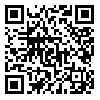BibTeX | RIS | EndNote | Medlars | ProCite | Reference Manager | RefWorks
Send citation to:
URL: http://refahj.uswr.ac.ir/article-1-1844-en.html
Objectives: Women have a vital role in knowledge-based economy and in recent years, Iran has experienced a considerable attendance of women in public and private organizations. Organizations have to paved the way for woman if they want to have a productive manpower. One of the most important problems in organizations is organizational bullying that led to stress. Unfortunately, workplace bullying is a reality in today’s organizations and it has been estimated that two percent of all employees have experienced bullying. Bullying have a negative affect on self esteem, physical health and emotional health. These climate cause absence and turnover. In this article we investigate the correlation between bullying and stress in women.
Method: The sample includes 285 women in Tehran University. To collect data for the research questionnaire have been used. The questionnaire contains 25 questions to evaluate female stress and 28 questions for evaluating bullying based on Likert scale as 1- strongly agree, 2-agree, 3- neither agree nor disagree, 4-disagree, 5- strongly disagree. 285 out of 300 questionnaires were handed back and thus used in analysis. To check the validity of the questions we have used specialist, professors and experts’ opinion to make sure that the questions are simple and clear enough. Also to determine the reliability of items, 30 questionnaires were distributed and completed as pretest. Cronbach’s Alpha shows the reliability of items is trustable. Factor analysis and spearman correlation coefficient was used to analysis the data.
Findings: The findings revealed the role of stress in workplace and provide some suggestions in order to decreasing it. To analyze the data SPSS version 15 software was used. The findings of the correlation text demonstrate the negative relationship between organizational bullying and stress
Results: It seems that women aren't familiar with their rights in workplace and don't care it thus these factors cause a passive position in women. The comparison of finding of this article with the other research exhibits a big contradiction that make some explanations. The most important of these differences is the social consciousness of women in Iran. Another significant factor that brings sence is the social norm which affect the socialization process in familiad institutions. Social perception of women affect the meaning of social reality in the eyes of Iranian. Women the matter of organizational bullying is different from the perceptions of western women. The training of necessary skills in social everyday life, preventing job family conflict, reinforcing the self confidence of female, regulating code of ethics and punishing the violence and bullying may reduce the organizational bullying and promote the organization health. One of the significant factor in reducing the frequency and intensity of bullying in organization is the leadership style of their managers. When the dominant leadership style in the organization would be dictatorship or autocratic leadership style, the violence and bullying could increase. The social support has a significant role in reducing the stress and the supportive leadership style can improve the condition for individual and groups. Thus it is recommended to use these solutions in order to reducing bullying in organizations.
Received: 2015/08/21 | Accepted: 2015/08/21 | Published: 2015/08/21
| Rights and permissions | |
 |
This work is licensed under a Creative Commons Attribution-NonCommercial 4.0 International License. |





